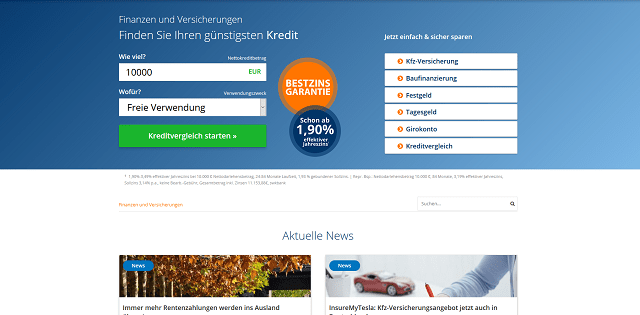Explore Personal Loan Options in India – Learn About Interest Rates in 2025
In 2025, several financial institutions in India offer personal loans with varying interest rates and terms. This informational overview presents general insights into the types of loans available, including details on eligibility criteria, interest rate ranges, and what to consider when comparing offers. If you’re exploring lending options, this guide can help you better understand the process.

The personal loan market in India has evolved significantly, with traditional banks, non-banking financial companies, and digital lenders competing to offer attractive terms to borrowers. Interest rates, processing fees, and eligibility requirements vary widely across institutions, making it essential to compare options carefully before committing to a loan. Understanding these factors can help you access funds at favorable terms while avoiding unnecessary financial burden.
Which personal loan offers the lowest interest rate in India in 2025?
Interest rates on personal loans in India typically range from 10% to 24% per annum, depending on the lender, loan amount, tenure, and your credit profile. Public sector banks often offer rates starting around 10.5% to 15% for borrowers with excellent credit scores, while private banks and NBFCs may charge between 11% and 18% for similar profiles. Digital lending platforms have introduced competitive rates, sometimes starting at 11% for short-term loans, though these may come with additional processing fees.
Your credit score plays a pivotal role in determining the interest rate you receive. Borrowers with CIBIL scores above 750 typically qualify for the most favorable rates, while those with scores below 650 may face higher interest charges or loan rejection. Additionally, salaried employees from reputable organizations often receive preferential rates compared to self-employed individuals due to perceived income stability.
| Lender Type | Estimated Interest Rate Range | Typical Processing Fee |
|---|---|---|
| Public Sector Banks | 10.5% - 15% per annum | 1% - 2% of loan amount |
| Private Banks | 11% - 18% per annum | 1.5% - 3% of loan amount |
| NBFCs | 12% - 22% per annum | 2% - 4% of loan amount |
| Digital Lenders | 11% - 24% per annum | 1% - 5% of loan amount |
Prices, rates, or cost estimates mentioned in this article are based on the latest available information but may change over time. Independent research is advised before making financial decisions.
Slice vs. HSBC: Which personal loan is better for your budget?
When comparing lenders, consider factors beyond just the interest rate. HSBC typically offers personal loans with interest rates ranging from 10.5% to 17% per annum for salaried individuals with strong credit profiles. The bank provides loan amounts up to Rs 40 lakh with repayment tenures extending to 5 years. HSBC emphasizes personalized service and relationship banking, often offering better rates to existing customers.
Digital lending platforms have different approaches to loan disbursement and repayment. Some fintech lenders focus on quick approval processes, often disbursing funds within 24 hours, though they may charge slightly higher interest rates for this convenience. When evaluating options, calculate the total cost of borrowing, including processing fees, prepayment charges, and any hidden costs that might affect your overall expense.
How to qualify for a low-interest personal loan in India
Securing a personal loan at favorable interest rates requires meeting specific eligibility criteria and demonstrating financial stability. Most lenders require applicants to be between 21 and 60 years of age, with a minimum monthly income of Rs 25,000 for salaried individuals. Self-employed applicants typically need to show annual income of at least Rs 3 lakh along with consistent business operations for a minimum of 2 years.
Maintaining a strong credit score is perhaps the most important factor in qualifying for low-interest loans. Pay existing credit card bills and loan EMIs on time, keep your credit utilization ratio below 30%, and avoid making multiple loan applications simultaneously. Additionally, having a stable employment history, preferably with at least 2 years at your current organization, strengthens your application significantly.
Providing complete and accurate documentation expedites the approval process. Essential documents include identity proof, address proof, income statements (salary slips or ITR), bank statements for the past 6 months, and employment verification. Some lenders may request additional documentation depending on your employment type and loan amount.
Best consolidation loan options for managing debt stress-free
Debt consolidation through personal loans can be an effective strategy for managing multiple high-interest debts. By combining several credit card balances or smaller loans into a single personal loan with a lower interest rate, you can simplify repayment and potentially reduce your monthly financial burden. This approach works best when the consolidation loan interest rate is lower than the weighted average of your existing debts.
Before opting for debt consolidation, calculate whether the new loan truly offers savings. Consider the processing fee, prepayment charges on existing loans, and the total interest payable over the loan tenure. Some borrowers find that extending the repayment period reduces monthly EMI but increases total interest paid. Balance your need for lower monthly payments against the goal of becoming debt-free sooner.
Successful debt consolidation requires discipline in spending habits. Avoid accumulating new debt while repaying the consolidation loan, create a realistic budget, and consider setting up automatic EMI payments to ensure timely repayment. Financial counseling services can provide additional guidance for managing consolidated debt effectively.
Personal loans explained: Eligibility
Eligibility for personal loans varies across lenders but generally includes age requirements, income thresholds, employment stability, and creditworthiness. Salaried employees typically need to demonstrate continuous employment with their current employer for at least 6 months to 1 year, while self-employed individuals must show business continuity for 2 to 3 years with profitable operations.
Income requirements differ based on the city of residence and loan amount requested. Metro city residents may need minimum monthly income of Rs 25,000, while those in smaller cities might qualify with Rs 15,000 to Rs 20,000 monthly income. The debt-to-income ratio also matters; lenders prefer that your total monthly debt obligations, including the new loan EMI, do not exceed 50% of your gross monthly income.
Certain professions and employers are viewed more favorably by lenders. Employees of government organizations, multinational corporations, and established private companies often receive preferential treatment in loan approvals. Additionally, having an existing relationship with a bank through savings accounts, fixed deposits, or previous loans can improve your chances of approval and potentially secure better interest rates.
Understanding personal loan options, interest rate structures, and eligibility requirements empowers you to make informed borrowing decisions. Compare multiple lenders, read terms and conditions carefully, and choose a loan that fits comfortably within your repayment capacity. Responsible borrowing, combined with timely repayment, not only meets your immediate financial needs but also strengthens your credit profile for future financial opportunities.



